Rating of the best barley eye drops for 2022
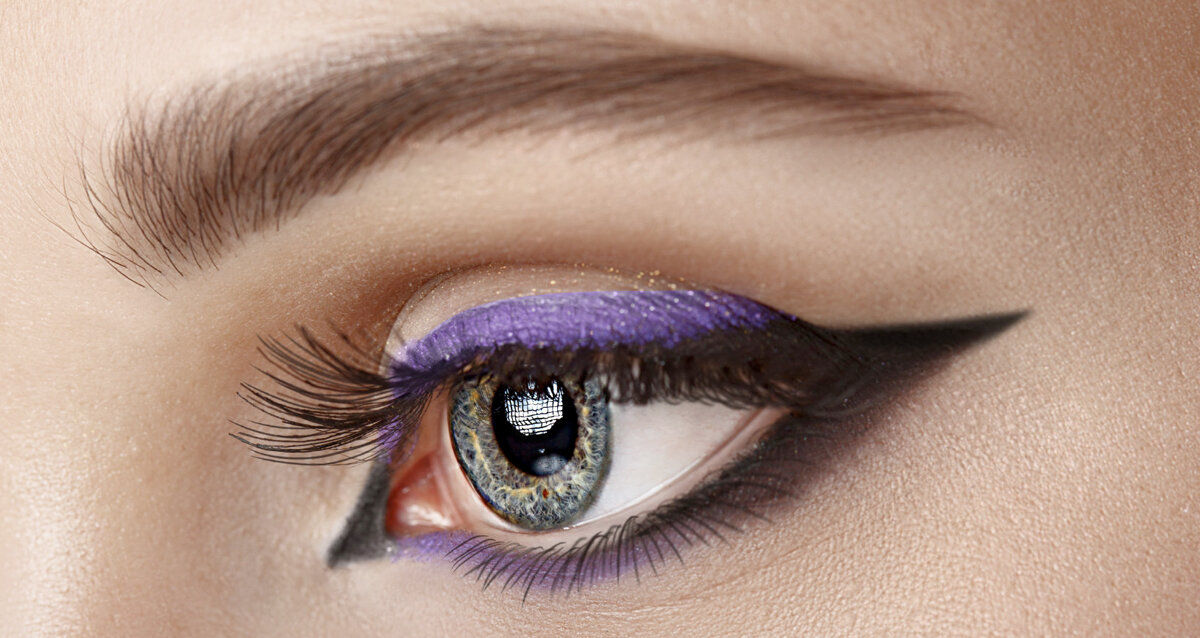
Eye drops are used in the treatment of various eye diseases. In the article we will talk about the best eye drops from barley.
Content
Kinds
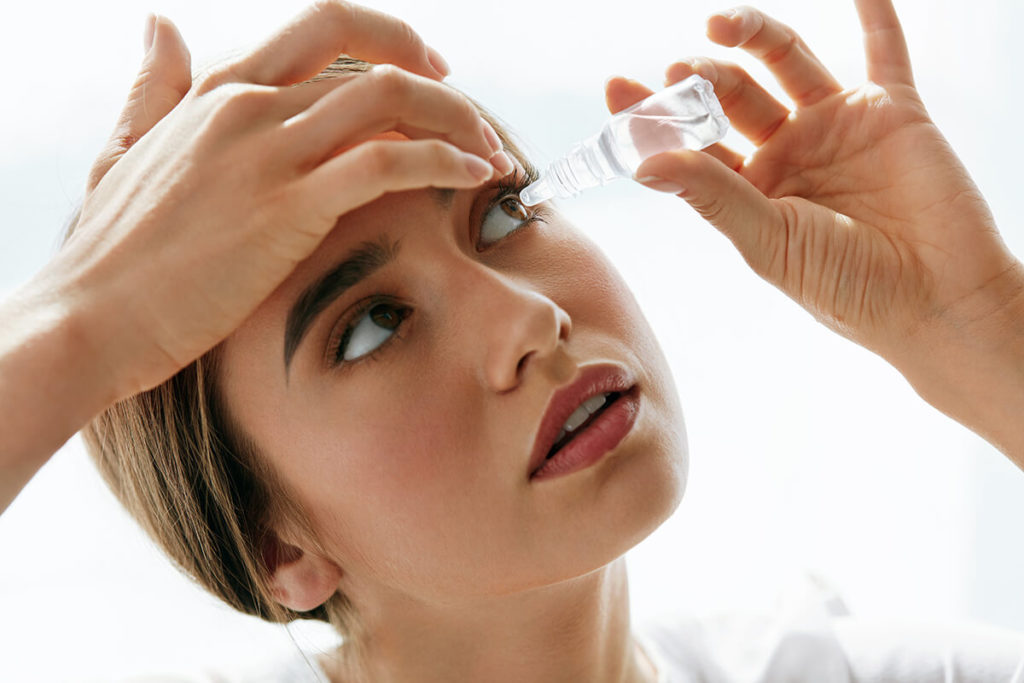
They differ both in composition and purpose.The main composition is water and polymers, that is, substances that retain water on the surface of the eye.
The quality of drugs depends on the polymers used in them.
Hyaluronic acid is a very important component as it is also a natural component of the structure of the eye. Another method of moisturizing the eyes is the use of saline, but this procedure does not give long-term effects. Therefore, it should only be used on a case-by-case basis.
Such preparations usually consist of the following ingredients:
- Hyaluronic acid - as mentioned earlier, it is a natural component of the structure of the eye. It is an important component because it binds water and adheres well to the surface of the eye. Hyaluronic acid moisturizes the eye and creates a protective layer on its surface.
- Heparin - a substance that exhibits moisturizing properties, relieves irritation, accelerates the regeneration of the conjunctiva and cornea;
- Ectoin - a substance that relieves inflammation in the eye, stabilizes the tear film and relieves itching and burning in the eye;
- Vitamin A is an ingredient that enriches the main composition of drugs. Vitamin A is essential for the proper functioning of the eyes. It significantly relieves the symptoms of dry eye, and also accelerates the regeneration of the conjunctiva and cornea.
- Preservatives and Phosphate Buffers - Preservatives extend the shelf life of the drops and prevent the growth and reproduction of bacteria in the used preparation. Most eye drops contain ammonium salt preservatives such as polydronium chloride and benzalkonium chloride.
What to look for when choosing?
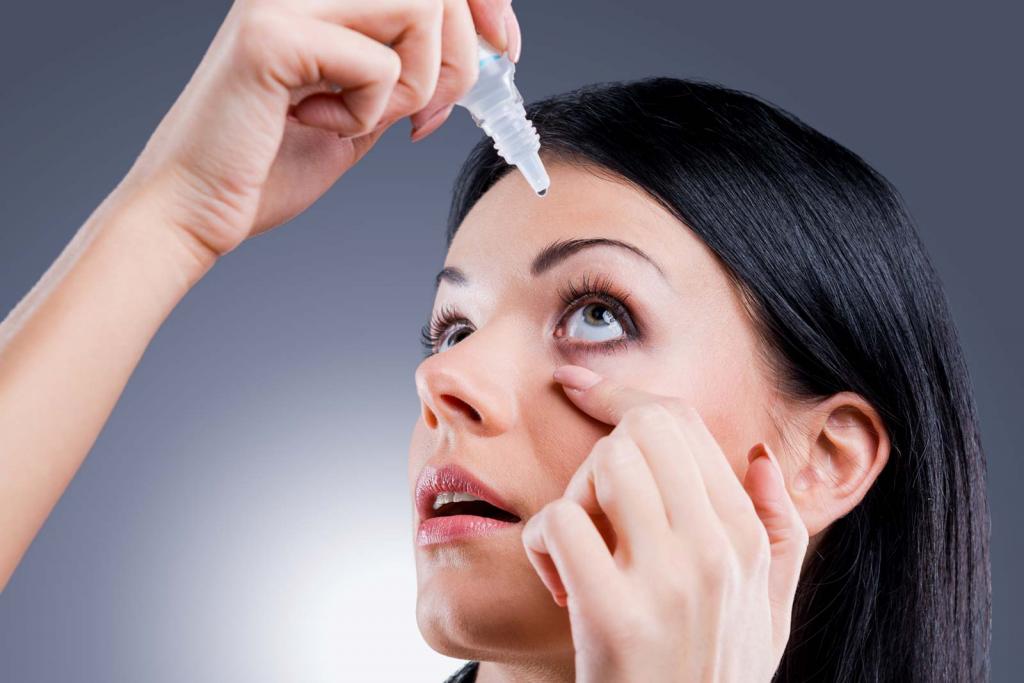
When choosing a drug, you should pay special attention to their intended use. Moisturizers are usually chosen to soothe irritated conjunctiva.Allergy sufferers should choose eye drops without preservatives. In this case, the most important thing is to minimize the side effects that lead to irritation.
When choosing, you should focus on the following criteria:
- Wearing contact lenses - if you do not wear contact lenses, be sure to tell the pharmacist at the pharmacy. The ingredients in some eye drops, especially preservatives, make soft contact lenses cloudy.
- Use of medications or eye ointments – Moisturizing eye drops coat the eye, which can block the absorption of medications used. When using the drug, it is necessary to find out in what order to use the individual drugs so that they can work effectively.
- Frequency - if the eyes do not require frequent moisturizing and their instillation is periodic, then it is best to purchase them in a disposable package. Such tools are commonly referred to as miniatures, and they have many advantages. Firstly, they have a much better composition than refillable packaging because there are no preservatives among the ingredients. The downside is their price, as they are more expensive to buy than reusable packaging. If eye drops are needed a little more often, it is worth buying a drug with a shelf life of 3 to 6 months after opening the package. On the other hand, with frequent use of eye drops, for example, several times a week, it is best to decide on the purchase of a drug that lasts up to 3 months after opening.
- Price - it is worth remembering that a good medicine, that is, without preservatives in the composition and in convenient packaging, is more expensive, but they are ideal for people with sensitive eyes.
Antibiotic eye drops
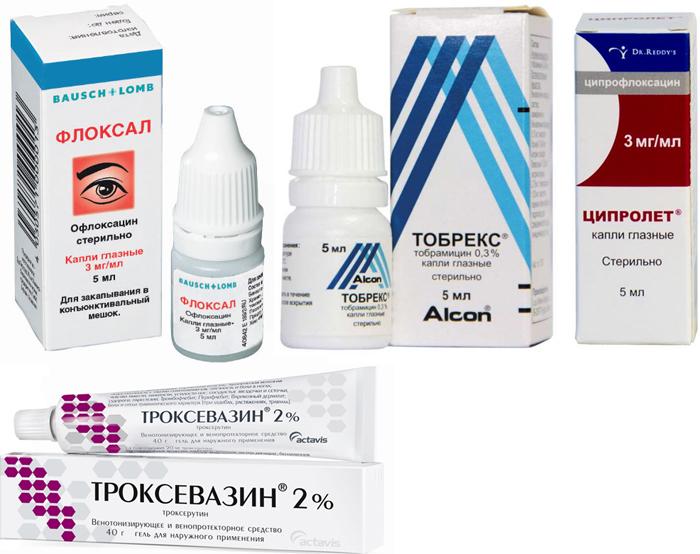
In case of eye diseases (for example, conjunctivitis, the appearance of barley), preparations that contain antibiotics and sulfa components should be used.
Attention! Such medicines are available by prescription. They are prescribed by an ophthalmologist. When using drugs with an antibiotic, there are certain rules established by a specialist.
Eyes with such drugs can be instilled every hour. As with oral antibiotics, eye preparations should be used for a longer period (7 days on average). It is worth remembering that treatment cannot be interrupted. An example of antibiotic eye drops is biodacin.
The best and safest preparations should not contain preservatives.
Dosage
The correct dosage is of great importance in the prevention and treatment of the disease. The conjunctival sac into which the drops are applied has a limited capacity, the maximum amount of which is approximately 30 microliters of fluid. On the other hand, one drop of medication that enters the eye is about 40-70 microliters. Therefore, do not apply more drops to the eyes than indicated on the package. Most of the droplets will either leak out or enter the nose or digestive tract through the lacrimal ducts. In many cases, this does not affect the state of health, however, when using highly effective drugs, the patient may experience unwanted side effects. This problem mainly affects people who are struggling with asthma or hypertension.
How to use correctly?
As with dosage, how they are used is just as important. Adjust the number of drops according to your daily routine.When using eye drops, you should always consult a doctor who will select the appropriate drug and suggest a method for using the drops.
Drops can be applied to the eyes while standing, sitting or lying down. To perform this procedure correctly, you need to pull back the lower eyelid, drip drops and press your finger on the corner of the eye near the nose to block the flow of tears. After application, you can blink your eyelids several times, which will improve the absorption of the drug. People who find it difficult to drip with an open eye can apply the product to a closed eyelid. Then some of the drops are placed in the recess near the nose, and when the eyelids open, the drops will flow into the eyes.
Barley on the eye - what to use, how long it lasts

Barley is a bacterial infection of the eyelid glands. Symptoms of the disease include:
- Pain in the eyes;
- edema;
- redness;
- itching and tearing.
Ocular stye usually resolves on its own and does not leave a scar. In chronic inflammation (so-called chalazion), surgical treatment is recommended.
Kinds
Barley is of two types:
- External (on the eyelid, "under the eye") - a skin lesion forms on the outside of the eyelid and is a red, very painful place. Then a tumor develops and a yellow plug is formed, which spontaneously bursts and heals after a few days.
- Internal ("in the eye") - caused by staphylococcal inflammation of the thyroid gland (meiboma). The lesion is located on the inside of the eyelid, making it barely visible without first lifting the eyelid.
It can manifest as a single or multiple skin lesion of the eyelid. Sometimes found on both sides.
Is barley bad for eyesight?
It usually resolves on its own and rarely causes serious complications.Properly processed barley does not cause visual impairment, unless it develops a large swelling of the eyelid.
Is it contagious and can it recur?
Barley is a skin lesion caused by an infection of bacterial etiology, therefore, if the rules of hygiene, especially of the hands, are not followed, infection of people from the environment can occur. In addition, the disease can recur, often despite proper treatment.
Causes include:
- infection ( Staphylococcus aureus or Staphylococcus epidermidis),
- lack of proper hand hygiene, frequent rubbing of eyes with hands, use of shared toiletries and towels,
- chronic diseases such as diabetes mellitus, rosacea, immunodeficiency, AIDS,
- chronic inflammation of the edges of the eyelids,
- seborrheic dermatitis,
- cancer formation,
- use of contact lenses, improper hygiene when removing eye makeup,
- prolonged exposure to polluted air, smog.
Barley on the eye - how long does it last and how does it pass?
Barley usually keeps about 7-10 days. Initially, there is a painful swelling of the eyelids and an inflammatory nodule is formed. Visible redness of the skin or mucous membranes. Then a yellowish purulent plug appears, which pierces the skin and dries up. Barley is often accompanied by severe itching of the eyelids, lacrimation and enlargement of neighboring lymph nodes. Sometimes changes come back. When healed, barley does not leave scars.
Barley in a child
Barley is a common eye disease in children. This is because the hands are dirty and infections are transmitted. In children, most often it resolves spontaneously and does not require specialized treatment. With severe swelling of the eyelid, the field of view may be reduced. Children usually complain of eye pain and itching.
Barley during pregnancy
Pregnancy predisposes to the development of stye due to a weakened immune system. Treatment of barley in pregnant women is the same as in other cases. Prevention is important: frequent hand washing, proper hygiene of the eye area and personal hygiene.
Eye stye treatment - when should you see a doctor?
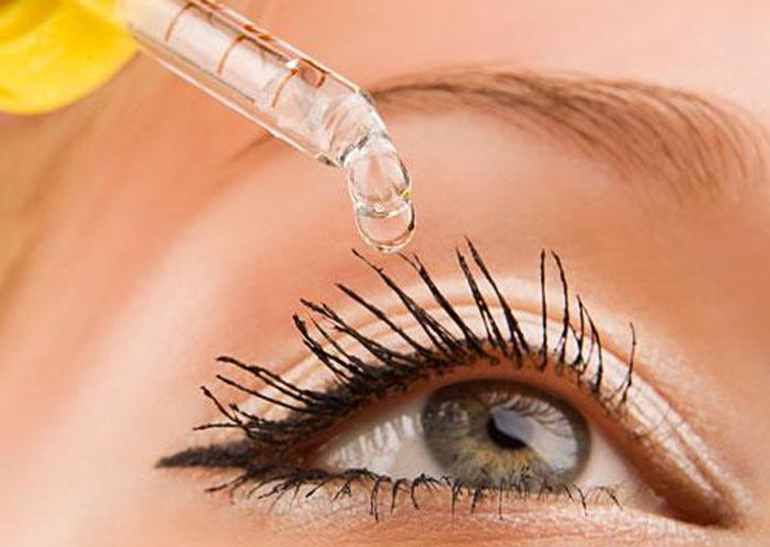
Barley usually resolves on its own and does not require special treatment. The main methods for relieving the symptoms of stye include the use of warm compresses and light massage, which helps to remove residual secretions in the inflammatory node. Massage in the direction of the mouth of the glands along the edge of the eyelid, that is: the upper eyelid from top to bottom and the lower eyelid up.
Warm compresses are effective.
The effectiveness of the popular and well-known method of rubbing barley with a ring is due to the fact that during the massage with the ring, the glands are unblocked and the residual secretion is removed faster.
The diagnosis is made on the basis of a careful history and observation of changes in the eyelids. Treatment consists of massages and eye ointments or drops containing antibiotics. In the event that barley becomes chronic - chalazion, surgical treatment is recommended to remove the lesion.
Urgent consultation is advisable in the following cases of barley, when:
- severe swelling of the eye
- blurred vision,
- heat,
- persistence of change for more than 10 days,
- swollen lymph nodes.
home remedies for barley
Styes usually go away on their own, so you may want to try home remedies first to relieve pain, swelling, and hasten the removal of residual discharge. In most cases, there is no need to use antibiotics.
Home remedies for the condition include:
- warm compresses,
- massages (before performing them, you should wash and disinfect your hands or use disposable gloves),
- eye hygiene care
- you can use compresses soaked in chamomile, green tea or calendula infusion,
- frequent washing of hands, regular washing of towels and change of bed linen,
- avoid using cosmetics such as eyeliner or mascara.
Eye drops for the treatment of such an ailment
Budget drugs
Tsipromed
A prescription drug for the treatment of infectious diseases of the eye, has an antimicrobial property.
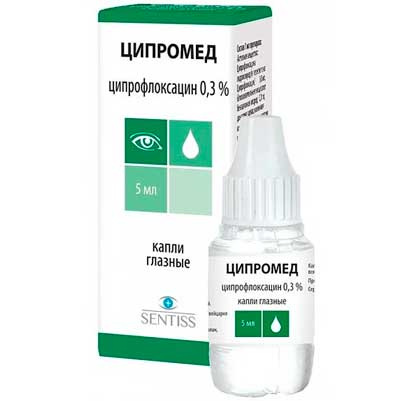
Volume - 5 ml.
The country of origin is India.
Price - 126 rubles.
- low price;
- helps a lot;
- does not cause burning and redness;
- comfortable to drip.
- no.
Tobrex
An affordable drug that is dispensed by prescription and doctor's prescription. It is intended for the treatment of a number of infectious diseases, including barley and prevention after surgery.
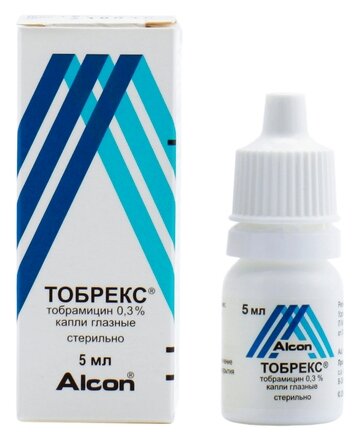
Volume - 5 ml.
Manufacturer - Belgium.
Price - 149 rubles.
- price;
- good quality;
- quick effect;
- good result;
- relieves redness.
- effective in bacterial conjunctivitis and blepharitis.
- according to customer reviews, cause a burning sensation.
Okomistin
The drug is intended for the complex treatment of eye diseases, suitable for both adults and children.
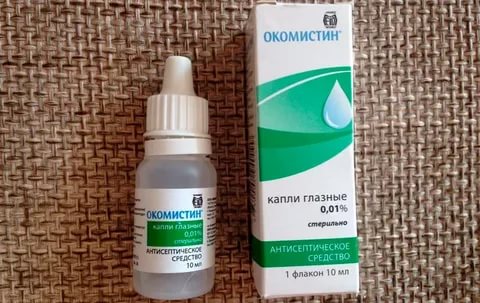
Volume - 10 ml.
Country - producer - Russia.
Price - 153 rubles.
- affordable cost;
- good result after application;
- quick help;
- suitable for the treatment of bacterial conjunctivitis, keratitis, blepharoconjunctivitis;
- suitable for the complex treatment of infectious diseases (ear, eye and nasal);
- can be used after eye injury;
- suitable for use after operations;
- prophylactic of purulent-inflammatory lesions of the eyes;
- can be applied to children.
- no.
Drugs of a higher price category
Octalmol
Medicinal drops of a domestic manufacturer for the complex therapy of viral diseases, herpes, barley.
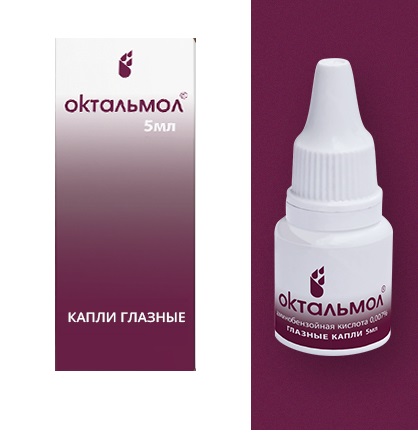
Volume - 5 ml.
Country of manufacture - Russia.
Price - 291 rubles.
- affordable price;
- intended for complex treatment;
- convenient to use;
- the drug has an antioxidant, immunomodulatory, radioprotective effect.
- may cause itching.
Okumetil
Drug for the treatment of allergic conjunctivitis, redness of the eyes, blepharoconjunctivitis, stye.
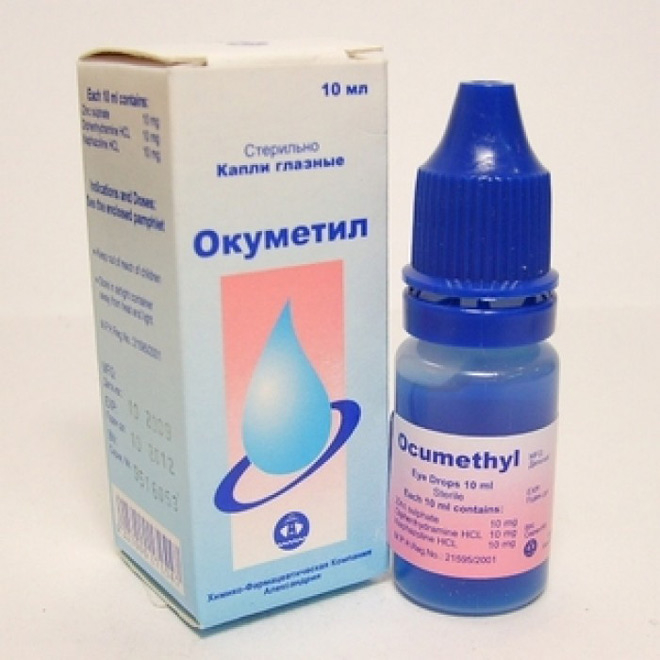
Volume - 10 ml.
Country of origin - Egypt.
Price - 235 rubles.
- price;
- good effect;
- convenient bottle - dropper;
- quickly relieves redness and inflammation;
- moisturizes;
- good vasoconstrictor;
- doesn't bake.
- not recommended for use while wearing lenses;
- may cause allergic reactions.
Vitabact
Eye drops for the treatment of bacterial infections.
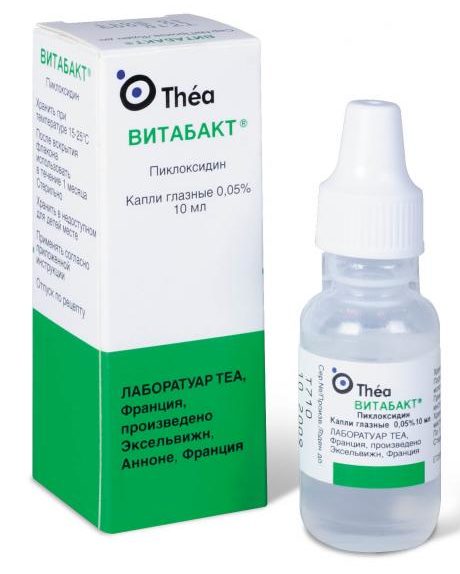
Volume - 10 ml.
The country of origin is France.
Price - 378 rubles.
- convenient to use;
- good result;
- suitable for both adults and babies;
- does not burn;
- does not cause redness;
- used after operations;
- antimicrobial agent;
- rarely causes allergic reactions.
- no.
Conclusion
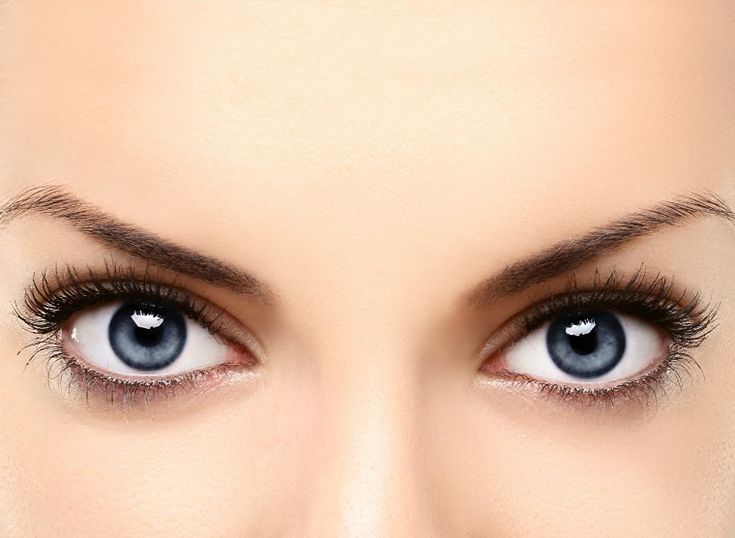
The eyelid is a skin fold, the main function of which is to protect the eyeball from mechanical damage, sunlight or other external factors. This very important element for the eyes consists of sebaceous and sweat glands. If you do not take care of the hygiene of the organ, inflammation and purulent conditions may appear. It is important to choose the right medicine and consult a doctor in a timely manner, you should monitor the relapse. After the barley has passed, increased hygiene around the eyes is especially important. It is worth spending a little more time on this and more carefully choosing cosmetics for cleansing the face and removing eye makeup.
new entries
Categories
Useful
Popular Articles
-

Top ranking of the best and cheapest scooters up to 50cc in 2022
Views: 131649 -

Rating of the best soundproofing materials for an apartment in 2022
Views: 127688 -

Rating of cheap analogues of expensive medicines for flu and colds for 2022
Views: 124517 -

The best men's sneakers in 2022
Views: 124031 -

The Best Complex Vitamins in 2022
Views: 121938 -

Top ranking of the best smartwatches 2022 - price-quality ratio
Views: 114978 -

The best paint for gray hair - top rating 2022
Views: 113393 -

Ranking of the best wood paints for interior work in 2022
Views: 110318 -

Rating of the best spinning reels in 2022
Views: 105327 -

Ranking of the best sex dolls for men for 2022
Views: 104363 -

Ranking of the best action cameras from China in 2022
Views: 102214 -

The most effective calcium preparations for adults and children in 2022
Views: 102010









